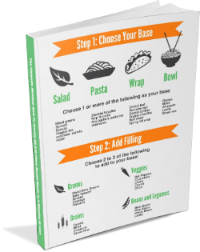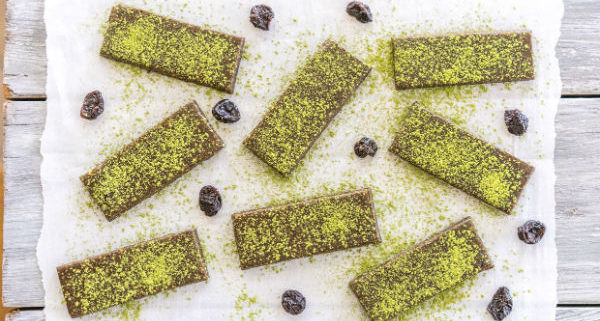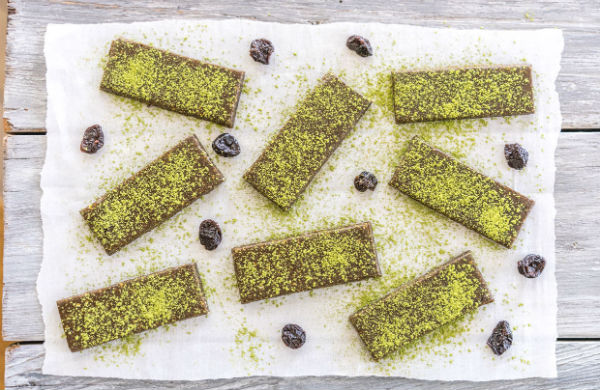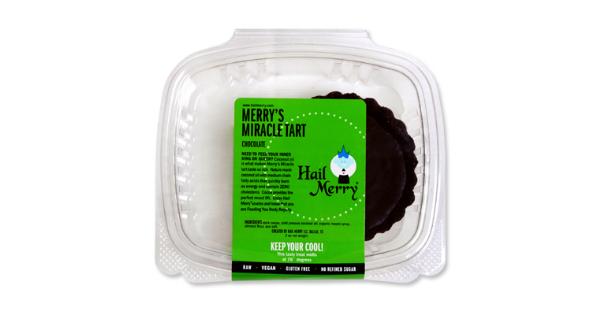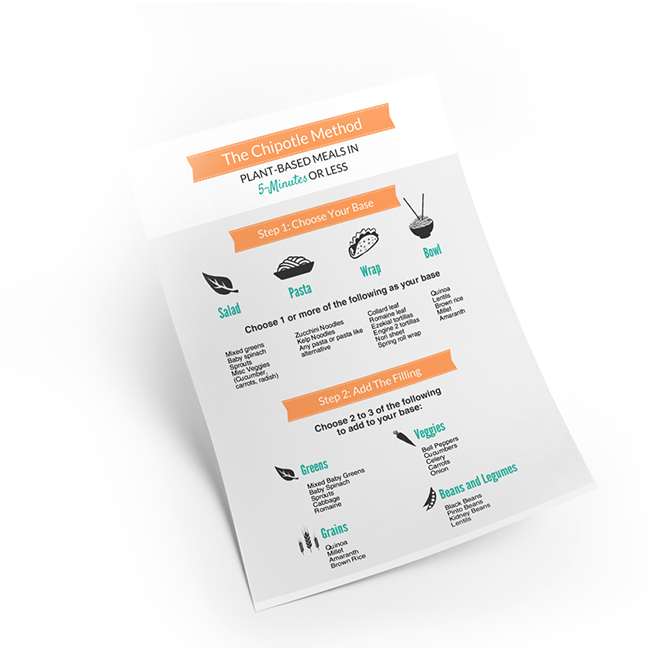
Photo Credit: Matt Biddulph
If you ever want to take a deep dive into the weirdness that is the human mind, there is a surefire way: try to get healthy or lose weight.
Last week, I shared the story of one gnarly craving that I struggled with for months! I then asked what kind of cravings you struggle with.
I received some fantastic responses (thank you!) and want to share a few with you.
My biggest challenge with living 100% plant-based is “cravings”, especially when I’m bored or tired. I work from home and the kitchen is only 10 feet away! I eat great for breakfast and lunch — green smoothie, fruit, salad, veggies. But when I hit a mid-afternoon slump of boredom or getting sleepy, I crave sweets! This leads me to some cookies or cereal. After that, it’s all “down hill”! – Joni H
My biggest problem is staying away from chocolate. ..sweets…never had a sweet tooth until going plant based 2 yrs ago…can’t lose weight but got off blood pressure meds etc…originally lost 50 gained 20 back and struggle daily. – Kathy F.
I think my biggest problem with food and alcohol is that I use it as a stress relief from our busy sometimes overwhelming lives & am constantly working on the principle of starting again on Monday! – Jane E.
Many of you confirmed when I myself have found to be true — that even when we are painfully aware of what throws us off track, we still seem powerless to stop it.
When my craving hit, I knew that it was only a matter of time before I found myself in the checkout line at the local health food store, ready to tear the tops off the miracle tart container(s) and dig in.
It is so frustratingly painful to experience the sense of helplessness, the lack of control, the guilt and shame of being at the mercy of a chocolate bar.
Especially when we truly, truly want to get healthy, lose weight, address a medical condition, etc, and we know that we are setting ourselves back.
The cycle is brutal, but the absolute worst part?
The experience of failure, overall sense of guilt, not feeling good enough, and the negative self-talk that accompanies it.
“Why can’t I do this?” “Why aren’t I good enough?”
It’s honestly nothing short of internal psychological warfare.
Well today I have a different message for you.
Even if you never buy one of my premium programs, unsubscribe from my mailing list right now, read this article and never come back to my site, I would be absolutely elated if you take this one message with you:
It’s not you. You are not a failure. You don’t struggle because you aren’t good enough. There is no inherent flaw, nothing missing in you that others have.
These feelings of guilt, shame, remorse, repression, deprivation, and so on do not support your journey, and it’s time to banish these feelings for good!
You, my friend, are not broken.
You are, however, quite human. And since you are proud owner of a human brain (whether you like it or not) with all its quirks and idiosyncrasies, it pays to revisit the instruction manual.
(And take a moment to laugh at this comic which sums up the whole affair.)

Photo credit: Dog House Diaries
Let’s take a step back and look at some super interesting psychological findings that might help us better understand just what exactly is going on between our earlobes.
I love this, because rather than blaming ourselves, we can better understand the mechanisms at play and how to tame them, knowing that it isn’t our fault.
Ready to end the psychological warfare and get the upper hand on our cravings?
Acknowledging The Elephant
Step one in understanding cravings is acknowledging the elephant.
On my About Page I share this quote from my friend Stephen in the midst of a cleanse. Please excuse his language.
“I feel like I have a split personality. The healthy one who knows better and the other one who doesn’t give a shit.”
Wow! Can you relate? Does the healthy you commit to getting healthy and then watch in utter shock as the other one:
…eats an entire pie after three days of perfectly following a new diet? (been there!)
…hits snooze fourteen times instead of getting up to go to the gym?
…justifies eating another slice of that double chocolate ganache pie “just this once” while committing to do better tomorrow?
If this stuff wasn’t so painful, it would be hilarious. How very weird are we?
I sometimes call this split personality syndrome the “Evil Twin.” Author and psychologist Jonathan Haidt calls it something different.
In his book The Happiness Hypothesis, Haidt uses the metaphor of the Elephant and the Rider to explain this divisive aspect of our psychology.
The Rider is analytical, rational, deliberates and makes decisions about the future.
It is the Rider who thinks a 30-day juice fast will be great for our health and 5 am is a wonderful time for a mild thirteen mile jog.
The Elephant on the other hand is emotional and cares only about its own pleasure, NOW.
*Please note, that I’m not speaking about the nature, character, or intelligence of elephants here. As a kind reader pointed out, they are magnificent beings, affectionate and incredible parents to their young. I agree wholeheartedly, and the elephant analogy is used solely so that we can better understand our inner-pscyhology for the purpose of improving. I think elephants are awesome!
The Rider sets the alarm for the 5am run, and the Elephant turns it off, sleeps until 10am, and then eats a pint of ice cream for breakfast.
The Rider sets the alarm for the 5am run, and the Elephant turns it off, sleeps until 10am, and then eats a pint of ice cream for breakfast.
If you ever feel like you are two people, this is why.
The key to cravings begins with understanding that you’ve got an emotional elephant to tame, and it is a powerful beast!
But there are ways to rein in the elephant. Yes it’s big and cumbersome, but not the sharpest pencil in the box. Turns out that you can trick it.
The Willpower Misconception
Sometimes I dream about buying a bullhorn, positioning myself on a busy street corner, and “sharing” this truth with the passersby:
“It is through psychology, not willpower, that you will be saved!”
Ok, I admit the slogan could use some work. (But then again I did name this website Don’t Lose The Cow, so…par for the course?)
When we struggle with cravings, we almost always think that willpower is the answer.
When the post-indulgence dust has settled, we are often embarrassed and feel guilty and ashamed.
We think, “what kind of undisciplined, out of control human being am I?”
And so we resolve to try harder next time, thinking that we just need to be more disciplined.
But may I remind you that you’ve got an emotional freakin elephant that you are trying to reign in! If you and an elephant go head to head, who do you think is going to win out?
See, willpower is the amount of energy that we can devote to controlling our elephant.
You can only fight the elephant for so long before you reach the point of exhaustion and the elephant gets its way and takes you on a wild ride.
And it seems the ride only gets wilder the longer we hold out!
Willpower is limited. And not only is it limited, but every single decision and act of self-control depletes our precious reserves.
For example in a study cited by the American Psychological Association, researchers placed a plate of cookies and a bowl of radishes in front of students before asking them to solve an impossible puzzle.
Some students were asked to help themselves to the radishes, but to please leave the cookies for another group that was coming in. Other students were given leave to help themselves to the cookies if they wished.
The students that resisted the cookies struggled with the impossible puzzle for just 8 minutes before giving up.
The students who ate the cookies on the other hand worked tirelessly for an average of 19 minutes before calling it quits.
Every decision from what to wear for the day, to prioritizing work and projects and saying no to temptation all deplete our willpower reserve.
In the book Mindless Eating, author Brian Wansink reveals that the average person makes 200 food related decisions a day! And that’s just food!
Now, this doesn’t take you off the hook for personal responsibility. Just like a muscle, willpower is something that you can and should build.
But what we need to understand is that the Rider has a limited reserve of willpower to devote to controlling the Elephant.
And when Rider and Elephant go head to head, it might not be the wisest decision to bet the farm on the Rider.
Willpower is important to develop, but it is also fickle and unreliable. And there is a much better strategy to use in controlling our cravings.
The Surprising Science of Habits
If willpower is not the answer, what is? What is the best way to tame the beast? To give our inner-elephant some self-restraint?
In his book the Power of Habit, Charles Duhigg explains how we can harness the science of habits to use our Elephant’s might to take us where we want to go.
He explains that habits have three parts:
- Cue
- Routine / Behavior
- Reward
1. The Cue
The cue is what triggers the craving. For me, the cue was feeling a bit sluggish after lunch, and not being excited about heading back to the office.
When I asked you how you felt as the craving hit, you were identifying your own cue.
For many it was boredom, feeling tired and sluggish, or having an emotional day.
2. The Routine or Behavior
The above examples are cues that then kick off the behavior, which in our case is indulging in the craving.
My routine was driving down to the local health food store and chowing down on a couple miracle tarts!
3. The Reward
The reward is how we feel afterwards. My reward was a bit of a sugar and caffeine rush from the chocolate, and experiencing a pleasurable break from the drudgery of a long hard day at work.

Now that we understand the component parts, let’s put the pieces together. Here is my own example below.
- Cue: Feeling sluggish and not wanting to go back to work
- Behavior: Chowing down on a couple miracle tarts
- Reward: Short term energy from sugar and caffeine rush and a pleasurable break before going back to work.
So now that we’ve got our craving charted, we are ready to reveal the real key to changing our habits and therefore controlling our cravings.
Drumroll please…
The Golden Rule of Habit Change
As we’ve all learned the hard way, totally eliminating a bad habit is extremely difficult.
And this is exactly what most of us try and do when we decide we just need to be more disciplined.
But if the Elephant is used to a post-lunch miracle tart bonanza, it’s going to get upset if lunch comes and goes with no special treat!
It makes sense after all, because habits form actual neural patterns in the brain. The behavior almost becomes hard wired.
So instead of quitting a craving cold turkey, the golden rule of habit change is as follows.
- Keep the same cue.
- Change the behavior or routine.
- Keep the same reward.

Our triggers often come from the external environment, and we often don’t have much control over them.
There wasn’t much that I could do to prevent the post lunch sluggishness that I was experiencing.
And we have trained ourselves to expect the reward. The fix is what would have me driving to the grocery store against my own best interests!
And so it is in the behavior or routine where we have the most power to affect change.
Which leads us to this magic question for rewriting the program and kicking the habit. Tak a moment and ask yourself this:
When I experience my cravings trigger, what constructive activity or food choice could I make to give myself the same reward?
This requires some real introspection and likely some trial and error as well.
Our first guess at the reward might not be totally accurate, and it may take some digging to get to the real root of what we are seeking.
In my case, I made a list of possible activities that would give me the reward I was seeking — a little post-lunch energy burst and pleasurable break from the stresses of work.
Here’s what I came up with:
- Quick walk in nature (always invigorating and makes me feel like it’s the weekend)
- Yoga while watching a favorite tv show (yoga energizes me and watching an episode of the Simpsons makes me feel like a kid again with zero responsibilities)
- A different sweet treat that was healthier (fruit, a larabar, or dandy blend tea sweetened with stevia)
And when the post lunch craving hit, I started experimenting with some of these alternatives.
Voila! It turned out that a walk or some yoga sometimes satisfied the craving, but usually the most effective bet was choosing a different sweet treat.
And varying both the treat and the activity seemed to loosen the hold that the craving had on me.
After a couple weeks the miracle tart craving was totally gone!
Now It’s Your Turn
Here’s your homework.
- Take a few minutes and chart your craving. Identify the cue, behavior, and reward. Really dig deep into the reward.
- Now make a list of different behaviors or alternatives that you think may give you the same reward as indulging in the craving. Don’t rule anything out just yet.
- Experiment with your ideas and examine the results objectively. If you are still indulging in the craving, take a step back and try and find out why. Play detective without judgement.
Share your results in the comments below. I’ll read and respond to every single one.
We will never sell your information or spam you, ever.
Matt Jager is a wellness activist, yogi and co-founder of True Wellth. His life mission is to transform the healthcare and food system in this country, so that every single person has access to the tools and support they need to look and feel their best, control their health, own their happiness and revolutionize their well-being.
 Feel like you live in the kitchen? Get our FREE Chipotle Method PDF, Recipe Sampler, and Email Course and learn how to make quick, easy meals that are delicious and satisfying.
Feel like you live in the kitchen? Get our FREE Chipotle Method PDF, Recipe Sampler, and Email Course and learn how to make quick, easy meals that are delicious and satisfying.
